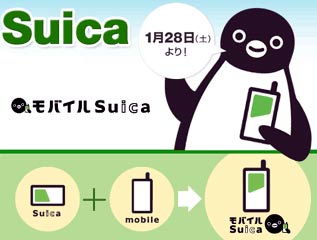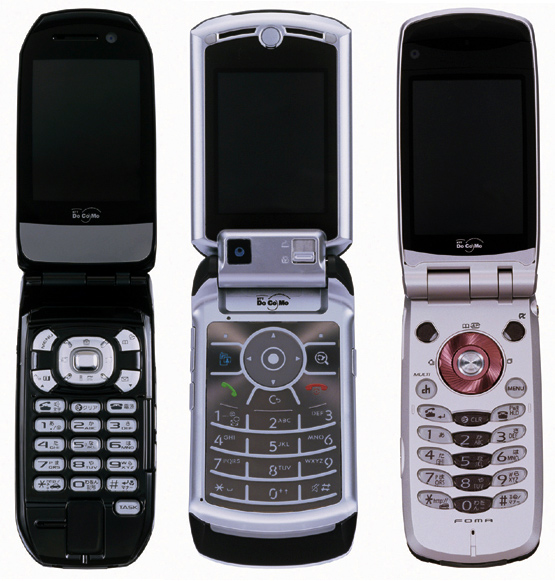 On a sunny Saturday morning here in Tokyo, Japan Rail launched their long-awaited Mobile Suica service, which will allow customers to use their FeliCa-enabled Osaifu ketai (wallet phone) to get into the station simply by swiping their handset past the turnstile reader. The service will be available at almost 900 stations located in the Tokyo, Sendai, Niigata, and Kansai regions. On roll-out day the system supports 12 handset models from DoCoMo and KDDI; none of the three available Vodafone units will be supported at launch. Interesting to note that DoCoMo’s latest F702iD, just announced last week, will be accepted as well. Until now, it has in fact not been possible to use your phone as a train ticket in Japan. Despite all the live demonstrations, trade-show hype and media speculation around FeliCa, the FeliCa-based Suica cards used by JR and the FeliCa-based handsets sold by DoCoMo, KDDI and Vodafone have been incompatible. As the well-established ‘Suica’ card is also accepted at many shops (including Bic Camera, a major electronics chain) in and around JR stations, this move will undoubtedly push up the volume of mobile payments made in 2006. It should come as no surprise that NTT DoCoMo announced on 26 January that sales of their FeliCa handsets passed the 10 million mark, a notable increased from the stated [.pdf] circulation of 7.7 million units in November 2005.
On a sunny Saturday morning here in Tokyo, Japan Rail launched their long-awaited Mobile Suica service, which will allow customers to use their FeliCa-enabled Osaifu ketai (wallet phone) to get into the station simply by swiping their handset past the turnstile reader. The service will be available at almost 900 stations located in the Tokyo, Sendai, Niigata, and Kansai regions. On roll-out day the system supports 12 handset models from DoCoMo and KDDI; none of the three available Vodafone units will be supported at launch. Interesting to note that DoCoMo’s latest F702iD, just announced last week, will be accepted as well. Until now, it has in fact not been possible to use your phone as a train ticket in Japan. Despite all the live demonstrations, trade-show hype and media speculation around FeliCa, the FeliCa-based Suica cards used by JR and the FeliCa-based handsets sold by DoCoMo, KDDI and Vodafone have been incompatible. As the well-established ‘Suica’ card is also accepted at many shops (including Bic Camera, a major electronics chain) in and around JR stations, this move will undoubtedly push up the volume of mobile payments made in 2006. It should come as no surprise that NTT DoCoMo announced on 26 January that sales of their FeliCa handsets passed the 10 million mark, a notable increased from the stated [.pdf] circulation of 7.7 million units in November 2005.



 On a sunny Saturday morning here in Tokyo, Japan Rail launched their long-awaited
On a sunny Saturday morning here in Tokyo, Japan Rail launched their long-awaited